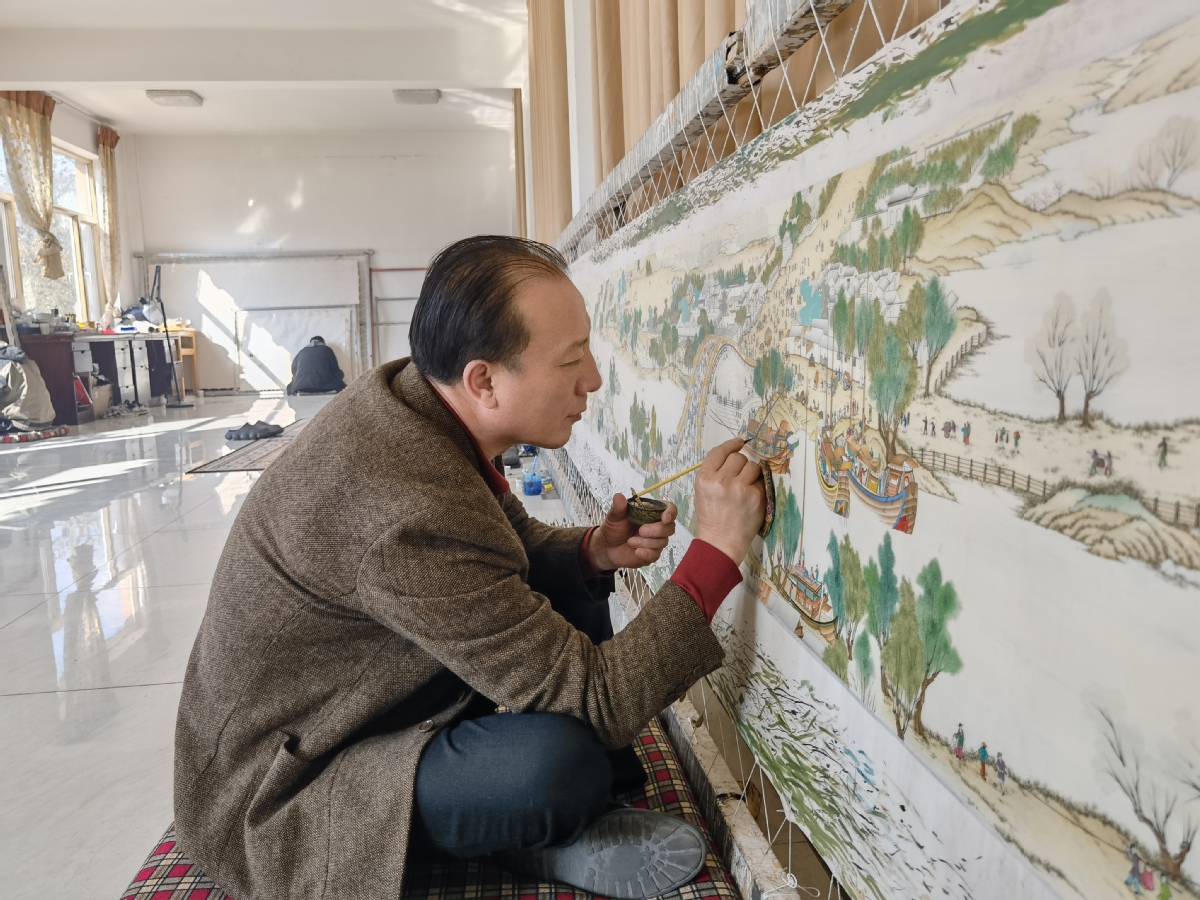Pride in thangka tradition motivates artist


Once he was a 12-year-old boy painting strokes and grinding pigments from dawn till dusk. Now, four decades later, Niangben stands as a thangka master, passing on the ancient technique to a new generation.
Niangben recently concluded his latest exhibition, Inheritance and Beyond, in New York, presenting 16 pieces that celebrate Tibetan Buddhism — a culture deeply tied to the Xizang autonomous region, known for its towering mountains and sweeping river valleys.
The exhibition, held at the Rockefeller State Park Preserve art gallery in Pleasantville, New York, in the Hudson Valley, mirrors the essence of Northwest China — particularly Qinghai province, and Xizang in Southwest China — with its picturesque terraces, plateaus, rivers and mountains at a gentler elevation, making Niangben's art "feel like home".
"I felt truly proud, as an artist, bringing such rich cultural heritage to the United States and the world," Niangben, 53, told China Daily.
"It's more than just art, it's a record of history. This painting tells the stories of the past. I want more people to see the value of thangka art and culture. My goal is to bring thangka to the world so that those who've never seen it can understand its beauty," he said. "I believe people will appreciate it, learn to preserve and build upon it, and share it," Niangben said at the exhibition's reception, wearing traditional Tibetan clothing that he said represents himself and his culture.
Regong art, which includes thangka painting, clay sculpture, applique, and wood and stone carving, has been passed down through generations by local artisans. The distinctive art form from the Regong region, especially thangka, is recognized as a national intangible cultural heritage and also has been recognized by the United Nations Educational, Scientific and Cultural Organization, or UNESCO.
Growing up in the Regong region of Huangnan Tibetan autonomous prefecture in southeast Qinghai, his family and the village faced poverty.
With two younger brothers and four elder sisters, Niangben took on the responsibility of supporting his family and began an apprenticeship under thangka master Xiawu Cairang, who himself was a student of the renowned artist Zhang Daqian, one of the most famous Chinese artists of the 20th century.
























